Sudden severe weather can leave your home or business vulnerable to roof damage, with hail damage and wind damage being two of the most common threats in San Antonio, TX. Each type of storm damage affects your roof differently, and understanding the differences is essential for timely roof repair and insurance policy claims. Shield Roofing, with over 25 years of experience, specializes in helping property owners recognize, repair, and recover from both hail and wind-related damage, keeping your roof strong and secure no matter what nature throws your way.
What Is Hail Damage?
Hail impact occurs when fast-falling ice pellets hit your roof materials, leading to various issues from dented shingles to significant structural harm. Asphalt shingles are especially vulnerable, often showing granule loss, cracks, or punctures post-storm. These problems may not be immediately visible from the ground, making professional inspections absolutely crucial for accurate assessment. How do inspectors differentiate between hail and wind destruction? They look for distinct patterns like round impact marks and concentrated areas of roof impairment that indicate hail impacts rather than wind-related tearing, lifting, or other forms of roof distress.
How Hail Affects Residential and Commercial Roofs
Hail can severely harm roofs, especially those with asphalt shingles or other vulnerable materials, leading to dents, cracks, and increased leak risks. Most home insurance policies cover hail impacts, but it’s crucial to review your specific coverage as terms vary. Some offer comprehensive protection while others may need additional endorsements. Always check your policy after a hailstorm. Are hail impacts covered by standard homeowner’s insurance? Generally, yes, but confirm your coverage and document any issues promptly. Routine inspections from Shield Roofing can help streamline the claims process and ensure necessary repairs are made.
Signs and Visual Indicators of Hail Damage
Identifying hail damage after a storm can prevent future issues. Look for these signs: signs of water intrusion, granule loss, and missing or cracked shingles. Also, check for water spots inside your home, indicating moisture infiltration.
Key visual clues:
- Round dents on shingles, vents, or metal flashing
- Granules from asphalt shingles in gutters or on the ground
- Cracked or missing shingles exposing underlayment
- Water spots on ceilings or walls indicating leaks
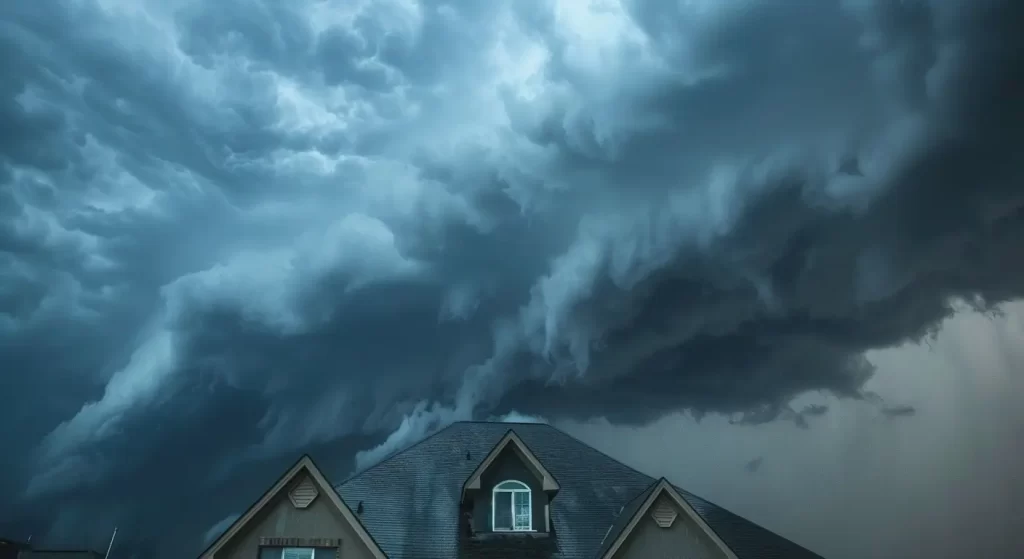
What Is Wind Damage?
Wind damage occurs when high winds tear at your roof, often during hurricanes, tornadoes, or severe storms. Unlike hail, wind can loosen or remove shingles, exposing your home to leaks and various structural issues that can worsen over time. Common signs of wind impact include missing shingles, bent flashing, and debris scattered around the property. After a storm, let’s take a closer look at how wind impacts typically show erratic patterns of shingle lifting or removal, while hail harm is more localized with distinct impact marks and granule loss that can compromise the roof’s integrity.
Types of Roof Damage Caused by High Winds
High winds can severely harm roofs, compromising your home’s structural integrity. A common issue is the loss of asphalt shingles, which exposes areas to the elements and increases vulnerability to further problems. Dislodged flashing may cause water intrusion, leading to costly emergency repairs. Debris can puncture or dent roofing materials, while flat roofs may pool water if drainage is blocked, risking structural issues during rain. Timely inspections by professionals can identify wind impacts early and prevent expensive repairs, keeping your roof in optimal condition.
Visual Clues to Identify Wind Damage
To spot wind damage, inspect your roof’s vulnerable areas. High winds typically affect edges and corners first, but severe storms can impact the entire roof. Look for shifted, lifted, or missing materials that may expose your home to water intrusion and structural damage.
Key visual clues include:
- Curled, lifted, or missing shingles
- Loose or bent flashing around chimneys or vents
- Debris in your yard
- Uneven sections with visible gaps
For hail vs. wind damage: Wind causes chaotic patterns with shingles peeled back, while hail leaves uniform round impact marks.
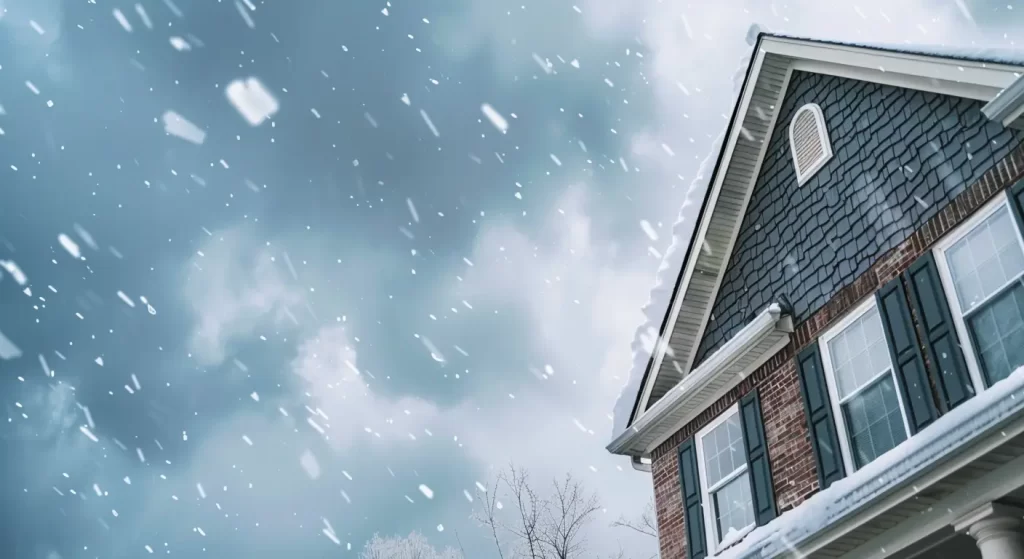
Key Differences Between Hail Damage and Wind Damage
Hail and wind impacts leave distinct marks on your roof, influencing both observed issues and the insurance claim process. Hail strikes show direct marks and granule loss, while wind harm results in lifted, missing, or bent materials. Recognizing these differences is crucial during inspections and claims. A professional roofing contractor can distinguish hail’s concentrated patterns from wind’s scattered effects, ensuring timely repairs and accurate insurance responses.
Weather Conditions That Lead to Each Type of Damage
Severe weather patterns cause distinct storm impacts. Hail harm typically occurs during intense thunderstorms with cold updrafts creating ice pellets that strike roofs forcefully. This is common in hailstorm alley, making San Antonio prone to such emergencies.
Wind destruction results from strong winds from hurricanes, tornadoes, or straight-line windstorms. These gusts can lift or remove roofing materials, exposing properties to rain and debris.
Certain weather conditions favor hail or wind issues: hail is associated with severe thunderstorms in hailstorm alley, while wind effects arise during major wind events like hurricanes and tornadoes. Each scenario requires a different emergency response.
Physical Differences in Damage Patterns
Hail and wind damage exhibit unique characteristics: hail creates small, circular dents clustered closely together, frequently removing granules from shingles and leading to potential leaks, while wind causes shingles to be missing, curled, or creased in a more random fashion, often resulting in significant exposure to the elements. Hail typically affects a single slope, whereas wind can impact several slopes simultaneously, increasing the risk of widespread damage. Water intrusion due to hail is evident at visible impact sites, in contrast to wind-driven water that seeps through lifted seams, making it crucial for homeowners to identify the source of damage accurately.
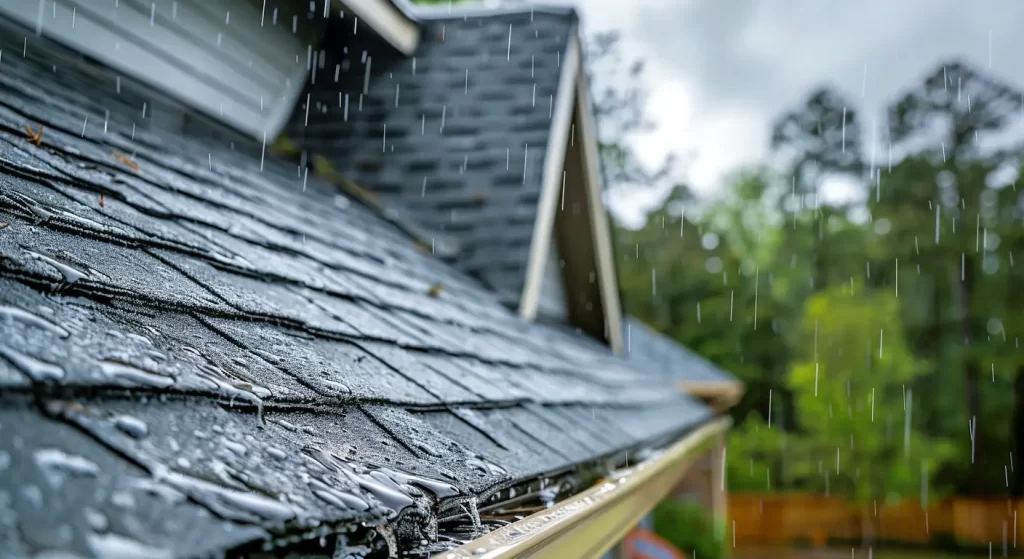
Immediate Steps to Take After Discovering Storm Damage
Act quickly after a storm to minimize storm damage and secure your property. The first step is to ensure your safety—avoid climbing on the roof or handling loose materials. Next, document damage for your insurance company and schedule a professional inspection with Shield Roofing, your trusted local roofing contractor in San Antonio.
Following these steps protects your investment, helps your insurance policy claim process, and guarantees your home or business receives the emergency roof repairs needed for long-term protection. Let’s explore safety tips and when to call for emergency repairs.
Ensuring Safety and Preventing Further Issues
After discovering storm impact, prioritize safety around power lines. Avoid major repairs yourself, as compromised structures can lead to falls or injuries. Instead, secure your property and prevent further harm while waiting for emergency roof repairs.
Key safety tips:
- Stay indoors until the storm passes and you’ve assessed your surroundings.
- Avoid areas with sagging ceilings or visible roof issues.
- Use buckets or tarps indoors to catch drips and protect valuables.
These measures safeguard your family and property, reducing water harm and repair costs. Rely on professional roofing contractors like Shield Roofing for major repairs, ensuring your safety with their expertise and equipment.
When to Call for Emergency Repairs in San Antonio
Call for emergency roof repairs immediately upon noticing severe harm, especially during San Antonio’s storm season. Signs like missing shingles, visible holes, or active leaks require prompt action to minimize destruction and protect your investment.
Contact Shield Roofing for a professional inspection and emergency repairs. We are fully licensed, insured, and accredited, with a proven track record of reliable service. Our experts will assess the impact and recommend effective long-term solutions.
If you see signs of hail or wind impacts—such as structural issues or missing materials—don’t hesitate; contact your trusted San Antonio roofing contractor right away.
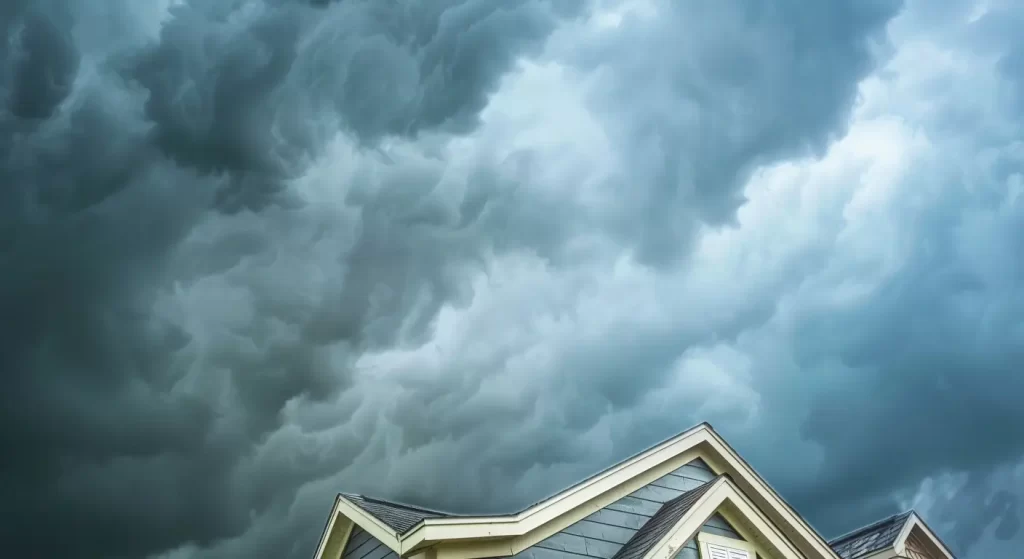
What’s Next
Understanding hail and wind damage is crucial for San Antonio homeowners and businesses. Recognizing their unique characteristics enables prompt identification and faster repairs, preserving your property’s integrity. At Shield Roofing, with over 25 years of experience, we ensure roofs are tough and long-lasting. By staying informed and acting quickly after a storm, you can protect your investment. As an Owens Corning preferred contractor and GAF certified, we proudly hold a BBB A+ rating. For expert assistance with roofing emergencies, contact Shield Roofing—your trusted partner in San Antonio, TX. Get your free consultation today and see the difference of working with the best!
Read our blog: How Waterproofing Membranes Help Commercial Roof Lifespan
Frequently Asked Questions
What is the difference between wind damage and hail damage?
Hail damage results from direct impacts by ice pellets, leaving round dents, significant granule loss, and potential water intrusion into the structure, while wind damage involves lifted, missing, or bent shingles caused by high winds that can compromise the roof’s integrity. Each type of storm damage, including types of damage like hail and wind, requires a different, thorough inspection and repair approach for optimal roof protection and long-term durability.
Can you list the most common types of repairs needed for hail damage versus wind damage?
Common repairs for hail damage include replacing dented, cracked, or granule-lost shingles, fixing water intrusion, and restoring structural damage from impacts. For wind damage, repairs often focus on replacing missing shingles, repairing or securing flashing, and restoring areas where roofing materials have lifted or torn away.
What immediate steps should I take after discovering either hail or wind damage to my property?
Secure your safety first, then document all visible storm damage with photos for your insurance company. Schedule a professional inspection with an experienced roofing contractor and apply temporary protection if possible. Promptly contacting professionals ensures emergency repairs are performed before further water or structural damage occurs.
